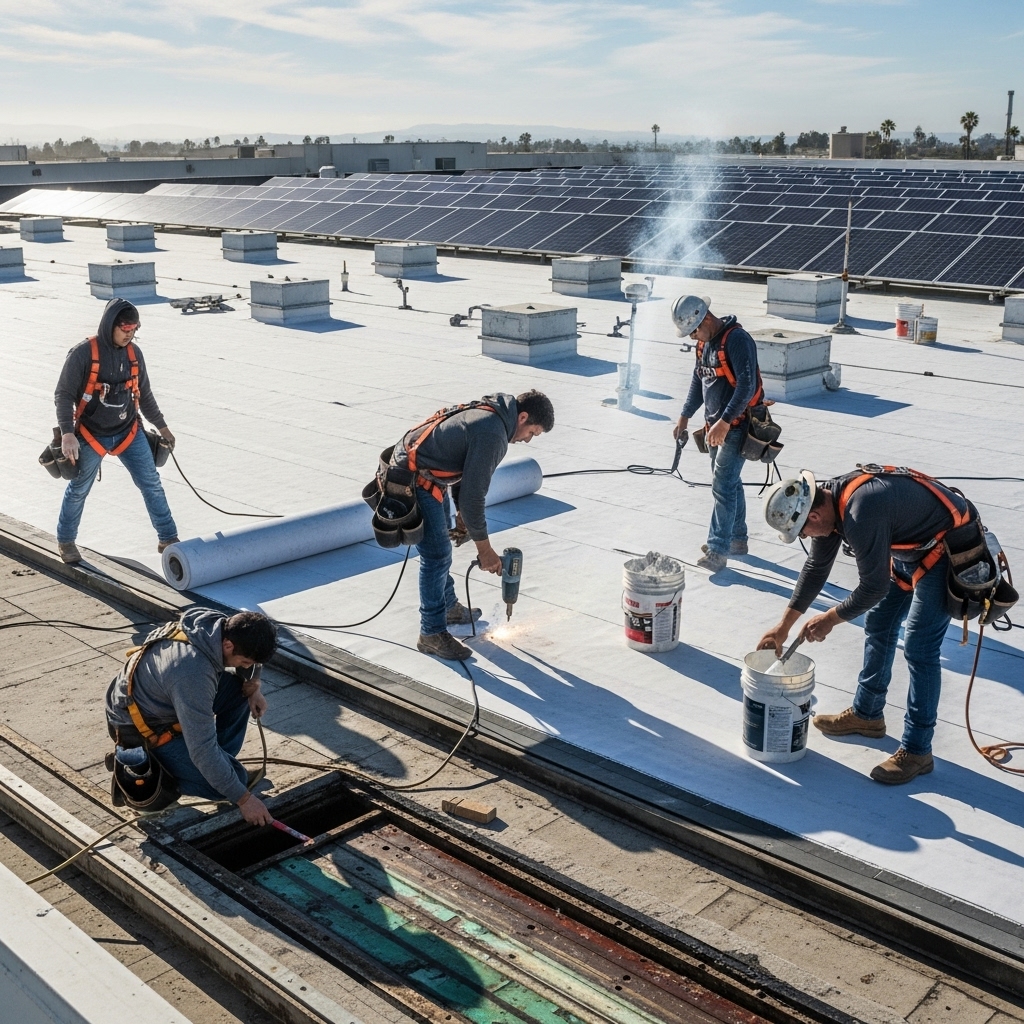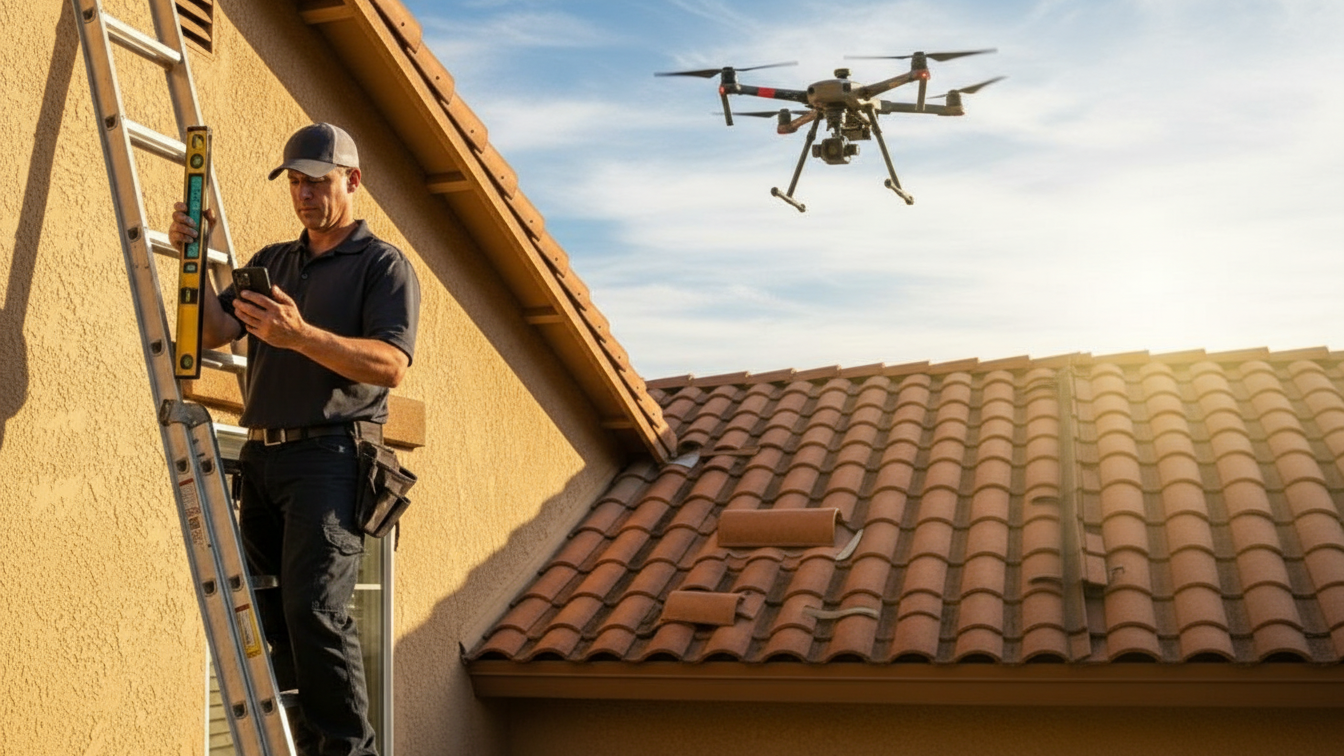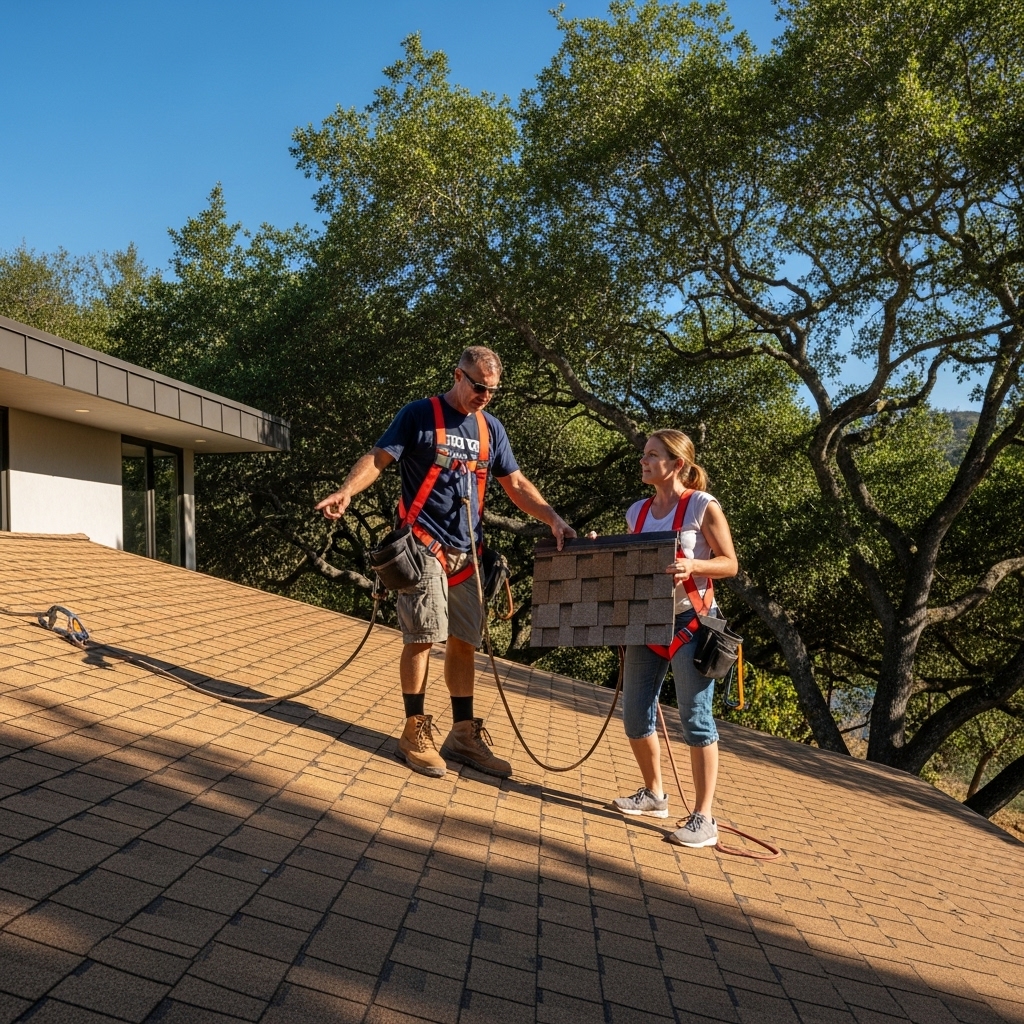Choosing a new flat roof in Oxnard is as much about reading the local environment as it is about reading product data sheets. Our coastal marine layer, bright afternoon sun, and periodic wind events shape how materials perform and how crews plan the work. If you are preparing for a replacement or a first-time installation, understanding the factors that influence the overall scope will help you make decisions that fit your building and your timeline. Before diving into membranes and methods, it helps to anchor your expectations around what flat roofing looks like in Ventura County and how an installation team approaches the process from assessment through final inspection.
Every installation begins with a thoughtful evaluation of the existing conditions. On replacements, that means documenting roof layers, core sampling to confirm what sits beneath the surface, and identifying wet insulation or compromised decking. In Oxnard, morning moisture can mask deeper issues, so technicians often schedule assessments when the deck has warmed and dried to get accurate readings. Understanding the substrate—whether it is wood, metal, or concrete—matters for fastener selection, attachment patterns, and uplift performance in our windy spells. Confirming slope-to-drain is critical, too; the best membrane in the world cannot perform if water is left standing after storms.
The decision between a tear-off and an overlay is central to planning. If the existing roof is dry, structurally sound, and within code allowances for the number of layers, overlaying with a compatible system can be an option. However, if moisture is present in the assembly or if the deck requires repair, removing old materials is the responsible path. In our region, carrying hidden moisture forward is a recipe for ongoing headaches—trapped water can degrade the substrate, undermine adhesion, and lower energy performance. A transparent plan that addresses what stays and what goes protects the new system’s longevity.
Membrane selection comes next. Thermoplastic options like TPO and PVC are popular around Oxnard because they reflect heat and offer durable seams when installed correctly. Each has its strengths: TPO is widely available with cool roof surfaces, while PVC offers robust chemical resistance, useful near certain industrial operations. Modified bitumen may be appropriate for some buildings, particularly when installed with meticulous flashing details. The key is matching the membrane to building use, roof geometry, and exposure. Sun, salt air, and wind all push on materials differently, so a membrane that excels inland might behave differently a half-mile from the ocean.
Attachment methods are tailored to the structure and local conditions. Mechanically attached systems, when engineered properly, perform well in wind-prone areas and on roofs where weight is a concern. Adhered systems create a smooth, clean look with excellent uplift resistance when paired with compatible adhesives and a well-prepared substrate. Ballasted systems are less common near the coast due to wind considerations and the desire to minimize loose aggregate. The right choice reflects not only the membrane but the deck type, expected foot traffic, and how the roof interacts with the building’s mechanical systems.
Energy codes play a role here, too. California’s Title 24 places emphasis on cool roof performance, which fits neatly with Oxnard’s sun exposure and the desire to keep interiors comfortable without overworking HVAC systems. Reflective membranes that meet these standards are readily available, but compliance is about more than color. Documentation, submittals, and inspection steps are baked into a well-managed project. Partnering with a team experienced in local code will keep submittals smooth and inspections timely so the project stays on schedule.
Details make or break a flat roof, and Oxnard’s coastal climate magnifies their importance. Parapets, scuppers, drains, skylights, and equipment curbs are where systems succeed or fail. Well-crafted flashings, clean transitions, and correctly terminated edges are essential to handle wind uplift and salt-laden air. In practice, this means careful substrate prep, compatible primers where required, heat-welded seams or properly torched laps, and secure terminations with the right hardware. It also means anticipating movement—thermal cycling that opens corners, vibration from rooftop equipment, and expansion and contraction along long parapet runs.
Logistics often shape the installation as much as the technical choices. Downtown and industrial Oxnard present access realities: limited staging areas, alleys that restrict lift placement, and shared parking lots. An experienced installer will plan deliveries to minimize congestion, protect landscaping and facades, and coordinate crane days so materials move efficiently without disrupting neighbors. Safety plans account for prevailing breezes and unplanned gusts, ensuring tie-offs and material handling are secure throughout the day.
Weather windows demand respect, especially during winter rains or when the marine layer lingers late into the morning. Installers watch dew points, surface temperatures, and wind forecasts to schedule adhesive work and seam welding appropriately. It is not uncommon to sequence tasks so that detail work begins while the field dries, then shift to welding or bonding once conditions are right. A disciplined approach keeps quality high and avoids trapping moisture in the assembly, which would compromise performance.
Coordination with other trades is another Oxnard reality. Rooftops support HVAC replacements, solar installations, and communication upgrades. A well-run project includes early coordination so penetrations are planned, sleepers are properly flashed, and walkway paths keep foot traffic off vulnerable areas. This collaboration reduces future disruptions and protects the new membrane from accidental damage after turnover.
Warranty planning starts before the first roll is unwrapped. Manufacturers specify substrate conditions, attachment patterns, and flashing details that must be met for a system warranty. Documentation—photos, fastener counts, and installation records—supports that process. A local contractor versed in both manufacturer standards and Ventura County permitting will set expectations early, so there are no surprises when the final inspection and warranty paperwork come due.
At the heart of a smooth installation is communication. Clear updates on sequencing, daily goals, and any discoveries during tear-off keep building owners and tenants informed. If wet insulation or deck repairs are found, a quick, documented pivot ensures the roof is rebuilt correctly the first time. In Oxnard, the best projects feel calm even when plans adjust, because the team has anticipated local variables and built in contingency paths.
Once the membrane is down and details are complete, testing and closeout steps add confidence. Water testing around drains and penetrations, seam probing, and a comprehensive walkthrough ensure everything performs as intended. Owners receive maintenance guidelines—keeping drains clear, coordinating rooftop access—and a record of materials and warranties. The result is a system tuned to our coastal climate, ready to handle foggy mornings, sunny afternoons, and the occasional spirited wind.
How do I decide between TPO, PVC, and other membranes for my building?
Match the membrane to your building’s use, roof geometry, and exposure. TPO and PVC both offer reflective, cool-roof surfaces and welded seams; PVC brings added chemical resistance, while TPO is broadly available and well supported. Modified bitumen can be appropriate for certain structures. A local assessment that considers salt air, wind patterns, and foot traffic will point to the best choice for your specific conditions.
What determines whether a tear-off is necessary?
The presence of moisture within the insulation or damage to the deck typically drives removal of existing layers. Code limits on the number of roof layers and compatibility with the new system also matter. Carrying hidden moisture forward reduces performance and can undermine adhesion. A combination of core samples, moisture scans, and visual inspection guides this decision.
How do local codes affect a new flat roof?
California Title 24 emphasizes energy performance and cool-roof criteria. Compliance involves product selection and proper documentation. Larger scopes and structural repairs may require permits and inspections through local authorities. A contractor experienced with Ventura County processes can streamline submittals and ensure the installation meets both manufacturer and code requirements.
Will installation disrupt building operations?
With planning, disruption is minimal. Crews sequence work to maintain access, control noise, and contain odors from adhesives when used. Deliveries and crane picks are scheduled to avoid peak hours. Communication with tenants and coordination with other trades—such as HVAC or solar—help the project proceed smoothly while the building remains in use.
What maintenance does a new flat roof need after installation?
Routine care protects your investment. Keep drains and scuppers clear, schedule seasonal walk-throughs, and manage rooftop access so equipment is placed on walk pads and tools do not damage the membrane. Documenting changes and any service visits maintains warranty compliance and gives future technicians a helpful history of the roof.
When you are ready to discuss options and plan a project that fits your building and timeline, connect with local specialists who understand Oxnard’s weather, codes, and logistics. From evaluation to closeout, a deliberate approach will deliver a system that performs year after year. For clear guidance and a streamlined path from design to warranty, reach out to plan your flat roofing installation with a team that builds for our coast.






